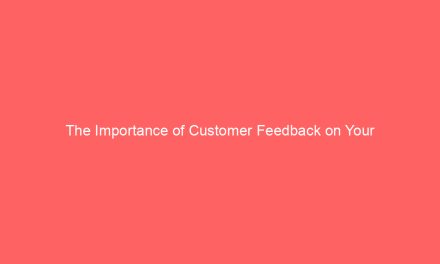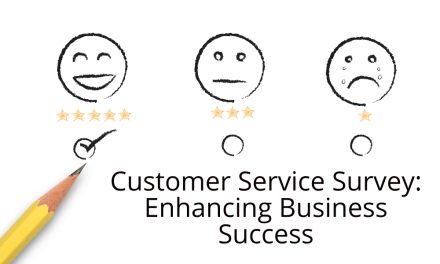In today’s highly competitive business landscape, understanding your customers and their needs is crucial for success. Customer feedback surveys are a powerful tool that can help you gather valuable insights and make data-driven decisions. These surveys, often called questionnaires or feedback forms, allow you to measure customer satisfaction, product experiences, customer service, website usability, and much more. In this comprehensive guide, we will delve into the world of customer feedback surveys, covering everything from the basics to advanced strategies. Let’s start by exploring the fundamental components and types of customer feedback surveys.
1. The Basics of Customer Feedback Surveys
1.1 What Are Customer Feedback Surveys?
Customer feedback surveys are a means to collect valuable information from your customers, enabling you to better understand their opinions, preferences, and experiences with your products, services, or brand. These surveys help you measure customer satisfaction, identify areas for improvement, and gauge customer loyalty.
1.2 Why Are Customer Feedback Surveys Important?
Customer feedback surveys offer several advantages:
- Insights for Improvement: Surveys provide actionable data that helps you make informed business decisions.
- Customer-Centric Approach: They demonstrate your commitment to meeting customers’ needs and expectations.
- Loyalty and Retention: Satisfied customers are more likely to stay loyal and recommend your brand to others.
1.3 Types of Customer Surveys for getting Feedbacks
Customer feedback surveys come in various types, each designed to address specific aspects of your business. The common types include:
- Customer Satisfaction (CSAT) Surveys: Measure overall satisfaction with a product or service. (Example question: “How satisfied are you with [product name]?”)
- Net Promoter Score® (NPS) Surveys: Assess customer loyalty by asking how likely they are to recommend your brand to others. (Example question: “How likely are you to recommend our [product/service]?”)
- Customer Effort Score (CES) Surveys: Evaluate the ease of using a specific feature or service. (Example question: “How easy is it to navigate our website?”)
- Product Feedback Surveys: Gather insights about your products, their features, and customer preferences. (Example question: “What do you like or dislike the most about our product?”)
- Customer Service Experience Surveys: Focus on the quality of customer support and interactions. (Example question: “Please rate your satisfaction with our team in resolving your issue.”)
- Website Experience Surveys: Evaluate the usability and effectiveness of your website. (Example question: “How would you rate our website on a scale of 1 to 5?”)
- Market Research Surveys: Gather information about customer preferences, competition, and market trends. (Example question: “Why did you choose our product over a competitor’s?”)
- Employee Experience Surveys: Assess the satisfaction and feedback of your employees. (Example question: “How would you rate the overall satisfaction of working with our organization on a scale of 1 to 5?”)
These survey types can be further customized to address specific business needs, making them versatile tools for gathering insights.
2. Crafting Effective Customer Feedback Survey
2.1 Designing Your Surveys
To create effective customer feedback surveys, follow these best practices:
- Keep it Simple: Short and concise surveys are more likely to be completed. Avoid overwhelming respondents with lengthy questionnaires.
- Ask Relevant Questions: Tailor questions to the survey’s purpose, ensuring they provide valuable information.
- Avoid Yes/No Questions: Instead, use open-ended questions that encourage detailed responses.
- Be Specific: Clear and specific questions yield more actionable insights. For instance, instead of asking, “What do you think of our products?” inquire, “What did you think of the new product X?”
- Use Branching Logic: Tailor the survey to individual respondents based on their previous answers, ensuring they only see relevant questions.
- Test Before Sending: Always test your survey with a small group to identify and fix any issues before widespread distribution.
3. Distributing and Collecting Survey Responses
3.1 Maximizing Responses
To ensure you receive a substantial number of survey responses:
- Reach a Wide Audience: The more people you survey, the more reliable your results will be.
- User-Friendly Surveys: Make it easy for people to respond. Lengthy or complicated surveys deter participation.
- Offer Incentives: Consider providing incentives, such as discounts, to motivate respondents.
3.2 Collecting and Analyzing Results
Once you’ve gathered responses, it’s time to analyze the data:
- Objective Analysis: Examine the data objectively to identify actual trends and patterns, not just what you expect.
- Drawing Conclusions: Use the insights gained to make informed recommendations and decisions for your business.
4. Advanced Strategies and Techniques
Advanced strategies can take your customer feedback surveys to the next level:
- Segmentation: Divide your audience into specific segments for more targeted analysis and personalized responses.
- Continuous Feedback: Implement ongoing surveys to track changes over time and stay in tune with evolving customer needs.
- Benchmarking: Compare your survey results to industry standards and competitors to identify areas for improvement.
- Predictive Analytics: Use data to anticipate customer behavior and tailor your offerings accordingly.
- Text Analytics: Leverage natural language processing to extract insights from open-text responses.
5. Frequently Asked Questions (FAQs)
5.1. What are the key metrics for measuring customer experience?
Key metrics for measuring customer experience include Customer Satisfaction (CSAT), Net Promoter Score (NPS), and Customer Effort Score (CES).
5.2. How can I encourage more survey responses?
To encourage more survey responses, keep your surveys short, offer incentives, and reach a broad audience through multiple channels.
5.3. What types of questions are best for collecting qualitative feedback?
Open-ended questions are ideal for collecting qualitative feedback as they allow customers to provide detailed responses in their own words.
5.4. How can I effectively analyze and interpret survey data?
Effectively analyze survey data by approaching it objectively, looking for patterns and trends, and drawing actionable conclusions to drive business improvements.
6. Conclusion
Customer feedback surveys are indispensable tools for understanding your customers, improving your products and services, and building brand loyalty. By following best practices and implementing advanced strategies, you can harness the power of surveys to make data-driven decisions, enhance customer experiences, and gain a competitive edge in your industry. Start gathering valuable insights today to take your business to new heights.
Remember: It’s not just about collecting data; it’s about turning that data into actionable insights that drive meaningful change.
In your journey to improve your business, customer feedback surveys are your compass. Use them wisely to navigate towards success.










